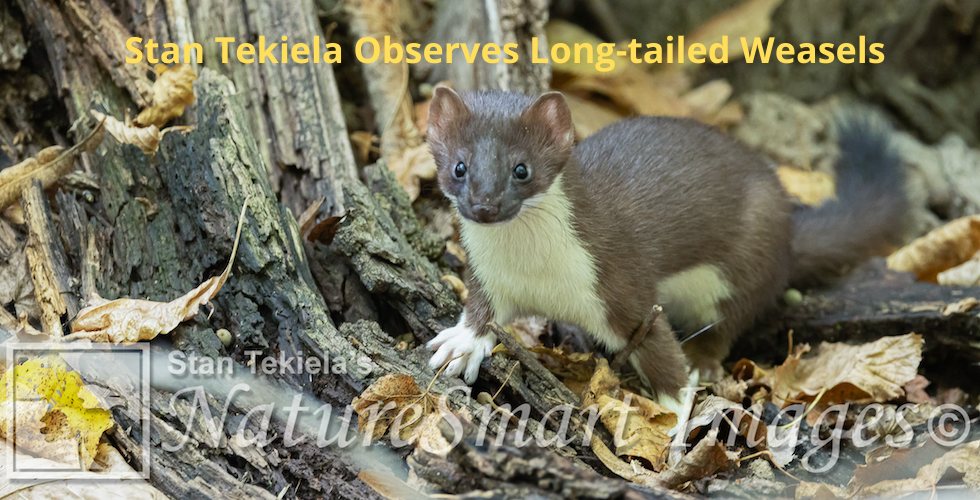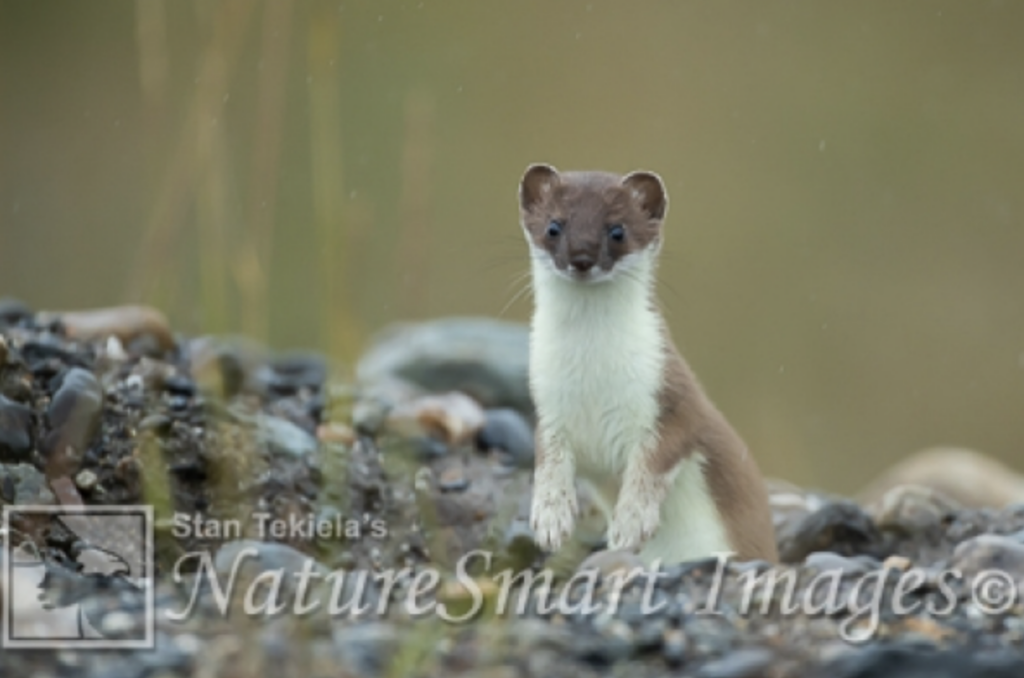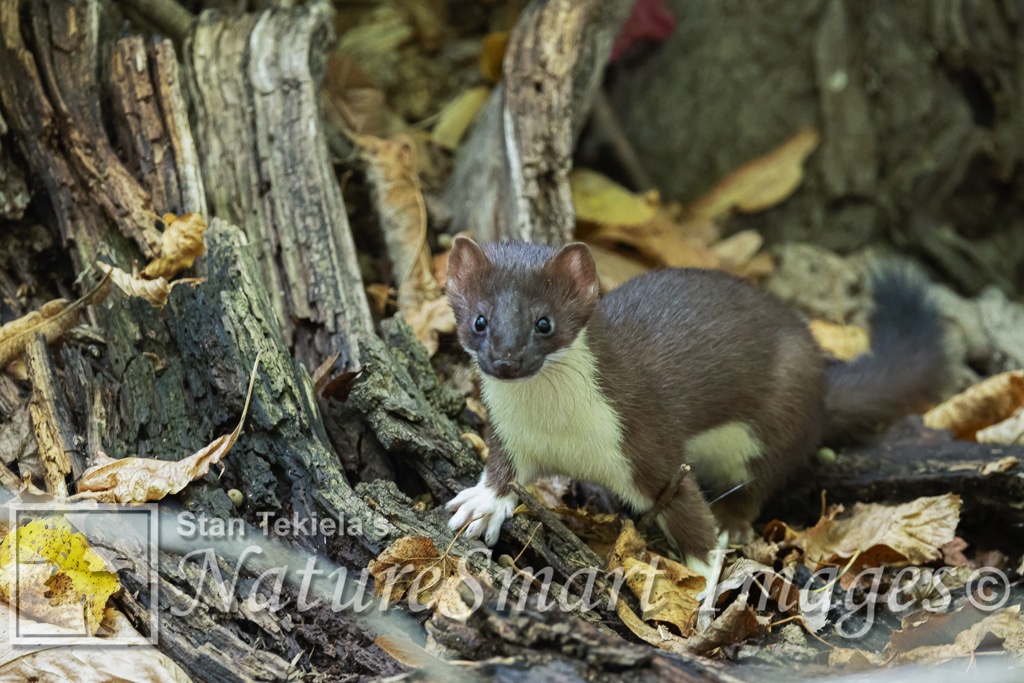
Spending Quality Time with Long-tailed Weasels
Naturalist and award-winning photographer Stan Tekiela recently had the opportunity to spent some quality time with Long-tailed Weasels. Here is his report.
Every now and then I get an opportunity to work with a species that I haven’t experienced much first-hand. These are often rare or endangered species—or ones that are difficult to access and live in areas that make them hard to get close to. This past week I had a very rare opportunity to capture some images and spend a couple of days studying the behavior of a pair of Long-tailed Weasels (Neogale frenata). Over my many years studying wildlife I have spent a lot of time with Short-tailed Weasels, their smaller cousin, but, for whatever reason, I hadn’t yet spent any quality time with the larger Long-tailed Weasel.

Long-tailed Weasels are a species in the mustelid family, which means they are related to badgers, ferrets, martens, mink, and wolverines. All these critters have a substantial musky odor that emanates from special anal glands. Some of the mustelids, such as skunks, use the glands for defense from predators, while others, such as weasels, use the scent to mark territory. Using a musky scent for marking territory or attracting mates for breeding is very common in many species, from weasels to White-tailed Deer and Muskox. If you have ever been near any of these animals, you know what I mean.
Long-tails are one of the larger of the true weasels in North America. Males are larger than females. The body length of an adult male runs 12-14 inches, so they are not huge animals at all. Despite their name, their tail is only 6-8 inches long and comprises only about 40-70% of the body length. So, in other words, the tail is about half the total length of its body. The more familiar and smaller Short-tailed Weasel has a body length of only 7-12 inches long, but its tail is about the same length as its body. How about that for confusing information?
In summer the long-tails are a rich chocolate-brown color with a yellowish chest and belly. They have a black-tipped tail. In winter they turn pure white but retain the black tip of the tail. What I find interesting is that the Long-tailed Weasels in the south, such as Florida, don’t turn white in winter. Only their northern counterparts do the switcheroo from summer brown to winter white. In addition, the long-tails in northern regions grow thick fur between their toes to cover the soles of their feet, while the southern ones don’t.

So, this means that Long-tailed Weasels will molt twice a year. Molting is the process of shedding old fur and growing new fur. The first molt is in the autumn—around October and November—and the second is in spring—around March and April. Each molt takes 3-4 weeks to complete. They do it gradually, so you really don’t notice the change. The one thing that remains the same is the black tip of the tail. The molting is governed by the photo period or length of daylight, which causes the pituitary gland to release hormones into the body of the weasel. The hormones trigger the shedding of old fur and growing of new fur.
I mentioned the long-tails in the south, such as Florida, so let’s look at their range. The Long-tailed Weasel is found in nearly every state in the US, up into Canada, throughout Mexico, and into Central and South America. It’s a huge range, so you might consider this species to be extremely widespread.
I was able to spend two days studying and photographing a pair of Long-tailed Weasels that had been rescued from the wild when they were newborns and were now old enough to be released back into the wild. The first day, they stuck close to a large, hollow tree where they were released. I spent most of the day watching and photographing their natural behaviors. I also set up a game camera to monitor their activities when I couldn’t be there, day and night.
They spent the first day just playing and getting to know their surroundings. They would return to the release spot several times during the day and into the night. The second day they were bolder and explored areas well beyond the release site. By day three, they were off into the wild to make a life on their own.
If you enjoyed Stan’s post, you may enjoy one of his amazing nature books: Wild Birds, Backyard Birds: Welcomed Guests at our Gardens and Feeders, and Bald Eagles: The Ultimate Raptors.
You can follow Stan on Facebook and Twitter, or contact him via his web page. Stan’s nationally syndicated NatureSmart column appears in more than 25 cities spanning 5 states (Minnesota, Wisconsin, Michigan, Illinois, and Pennsylvania) and is circulated to more than 750,000 readers.
For more stories about wildlife and nature, sign up for our newsletter now!


